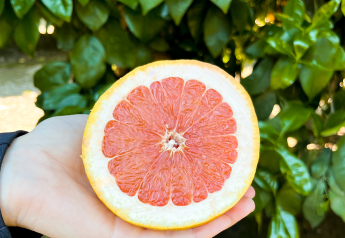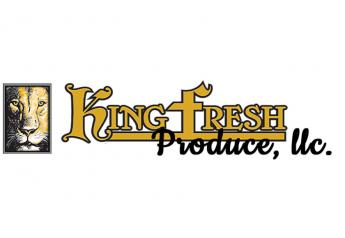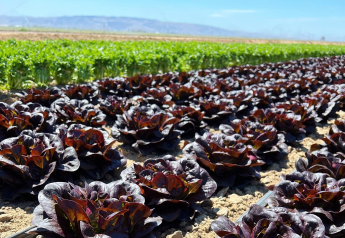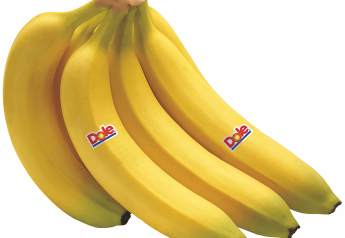What Makes Healthy Soil?

Take the first step toward more stress- and drought-resistant soils by adopting the Systems Approach to soil management
Nearly 75 years ago, USDA soil scientist Charles E. Kellogg wrote: "Essentially, all life depends upon the soil." Expressing a similar sentiment, President Franklin D. Roosevelt said: "The nation that destroys its soil destroys itself."
Think about it: No matter how much management, labor and fertilizer you apply, and regardless of the quality of seed you plant, it’s the soil that underpins how much food and fiber you produce.
During the hard-hitting drought this past summer, it wasn’t uncommon for one field to vary from 170 bu. to 240 bu. per acre while a nearby field of the same soil type struggled to make 100 bu. Some fields yielded zero because they folded under stress.
Farm Journal Field Agronomist Ken Ferrie saw it, too. "Some of the low yield may have been due to planting date or hybrid selection," he says. "But some of the difference was due to poor soil health.
"In adverse conditions, healthy soil will hang on longer," Ferrie says. "But unhealthy soil may burn up before the crop gets started.
"Farmers have always looked at the individual components of soil health, such as fertility, tillage and water management. But to really improve soil, we have to look at all the components together, in a Systems Approach to soil management."
Farm Journal’s new series of in-depth articles about soil health will help you do that.
The first step is defining your objective. "I like to define soil health as sustained productivity," Ferrie says.
"But we could also call it ‘maintaining profit,’ not just for ourselves but for our kids and grandkids."
Soils were not created equal in terms of yield capacity, Ferrie notes. "Soils differ in their ability to produce a crop," he explains. "Your lightest soil, even in the best of health, may not keep up yieldwise with a darker soil in poor health. It’s like comparing a 17-year-old to an 80-year old. Eventhough both are healthy, the teenager is more athletic.
"Even if he’s overweight, the 17-year-old may still outrun and outjump a fit 80-year old. With soils, too, some are naturally more athletic. But by making all our soils as healthy as possible, we maximize each one’s productive capacity."
Let’s start by describing unhealthy soil, the kind you want to—have to, if at all possible—improve. You know the symptoms: poor tilth (crusting and compaction, fields struggling to get a crop up); disease problems, especially seed rot and early pythium; poor infiltration (water runs off the unhealthy soil, while it soaks into the healthy soil—often in fields that are side by side); ponding, resulting from poor drainage; low water-holding capacity (soil dries out while healthier fields stay green); unbalanced fertility, caused by pH issues; and clay knobs where the topsoil has been eroded.
What soil health is. Now let’s examine the characteristics of healthy soil. With the first one, depth of topsoil, you are limited by what nature—and, in many cases, years of erosion—have provided. "But you can still maximize the health and productivity of whatever soil you have," Ferrie says.
You already are managing fertility, striving for balanced nutrients and proper pH. If you haven’t been blessed with naturally well-drained soil, you probably have installed some drainage to remove high water tables before they damage a crop. Good drainage also lets you make field passes in a timely fashion, without causing compaction.
Healthy soil has sufficient waterholding capacity for its soil type to help crops survive dry seasons such as 2012 (which accounts for some of the yield differences we mentioned earlier).
You understand soil tilth and are trying to improve it because tilth affects water infiltration. But this aspect of soil health is a little trickier than balancing nutrients, Ferrie notes.
"Using tillage, we can eliminate sudden density changes, improve infiltration and increase usable water-holding capacity," Ferrie says. "We can also decrease surface and subsurface hardness. However, doing the wrong tillage at the wrong time can destroy everything we’ve accomplished."
Healthy soil contains strong and diverse microbial activity. "In a handful of soil, there are more microbes—bacteria, fungi and actinomycetes—than there are humans on the face of the Earth," Ferrie points out.
The good things you do for your soil are actually aimed at supporting those microbial populations. "For example, we tend to think we are applying fertilizer to feed crop plants," Ferrie says. "But those nutrients must be processed by microorganisms and then released to the plants.
"When we apply lime, we are applying it not for the corn crop, but for the microbes," Ferrie adds. "Corn can live with a pH as low as 4.0. But soil microbes can’t.
"In fact," Ferrie summarizes, "everything that we do to improve soil health is really aimed at building and maintaining this diverse population of soil microorganisms."
Finally, healthy soil is free of toxins. That includes herbicide residues, allelopathic substances and acids.
The defining characteristic of healthy soil—the one that jumps out at you from the road or the combine monitor—is its ability to resist adverse weather events, such as drought.
"If you succeed at managing those factors, you’ll have healthy soil," Ferrie says.
Chemical, physical and biological. One way to evaluate the management aspects of soil health is to think of them as chemical, physical and biological.
You already understand the chemical side. It’s the nutrient and pH analysis that you find on your soil test.
"Physical aspects like soil texture— the percentage of sand, silt and clay particles—make some soils more ‘athletic’ than others," Ferrie says.
There’s a huge difference in the size of those particles. "Think of it like this," Ferrie says. "If a sand particle is a 747 airliner, a silt particle is a Cessna and a clay particle is a hummingbird."
Another physical aspect is aggregate stability. "Healthy soil has particles bound together, in a crumblike structure, or soil aggregate," Ferrie says. "Different sized aggregates create macropores, which hold water that can be extracted and used by plants. Smaller pores, called micropores, also hold water, but it is bound tightly to soil particles and unavailable to plants.
"In healthy soil, if you immerse an aggregate in water, it will hold together. If the aggregate falls apart, sand remains in the upper layer, while silt and clay shift downward in the soil profile. This changes macropores into micropores, inhibiting water percolation," Ferrie explains.
"So aggregate stability translates directly into available water-holding capacity—the amount of usable water your soil can hold above the water table," he summarizes.
"For practical purposes, the waterholding capacity determines how heavy a population you can plant—something you must understand to use variable-rate technology."
Another physical property of soil is penetration resistance. You can think of it as compaction or soil strength. When soil is free of compaction and dense layers, it is easier for crop roots to penetrate. It’s also easier for water to move upward, via capillary action.
The biological aspect is organic matter—the portion of soil that was once living plants or animals. That’s one of the things that makes soil microorganisms so important. They mineralize organic matter into nutrients that crop plants can use.
Soils with higher levels of organic matter are able to retain more nutrients. This is called cation exchange capacity (CEC) and is expressed as a numerical value.
"We’re looking for a balance of chemical, physical and biological aspects," Ferrie says. "It’s possible to have high soil fertility levels due to manure applications but poor soil biology and physical health. An organic farmer could have great physical and biological properties in his soil but poor chemical health. For healthy soil, you must manage all three components."
Each component—chemical, physical and biological—can be tested, providing benchmarks to measure your progress in improving soil health.
Make your soil healthier. When you understand the various aspects of soil health, you can start improving it.
Tackle the ea siest steps first. These include balancing fertility and pH levels and using vertical tillage to remove compacted layers, Ferrie says. Improve drainage if you and your landlords can afford the investment.
After that, the options get tougher. "Reducing tillage is beneficial," Ferrie says, "but it may delay planting, especially in northern areas. No-till may be difficult in poorly drained soils. Some can’t be no-tilled until you improve structure. Changing tillage systems requires its own Systems Approach, from planting through harvest."
"Diversified crop rotations are better for soil health, but they don’t fit many operations that have specialized in a few crops for efficiency," he says. "For new crops to be practical, they require markets, storage capacity and often livestock."
Cover crops, in conjunction with no-till, have the highest potential to improve soil health. "Cover crops can provide diversity for soil microbes; improve soil aggregation, water filtration and storage; suppress weeds; reduce soil erosion; and recycle crop nutrients so they won’t escape and pollute water sources," Ferrie says.
"But just like adding new cash crops to your rotation, cover crops require knowledge and good management to be successful—so do your homework first. Decide what cover crop to plant, based on the cash crop that will follow it next spring.
"Decide now when you’re going to kill the cover crop next spring—and who will kill it, you or your retailer," Ferrie says.
Determine whether you will have to pay a carbon penalty because of the increased residue created by the cover crop—and, if so, how you are going to pay it. Whether or not there’s a carbon penalty will depend on which cover crop you plant and which cash crop follows it.
Short growing seasons add to the challenge. "Planting a cover crop without fully understanding all these things is failing to apply the Systems Approach," Ferrie says.
Short-term versus long-term. The conundrum with soil health is maintaining profit as you make improvements. "The most profitable farms may not be the healthiest, and the healthiest farms may not be the most profitable," Ferrie says. "But when you find that balance, you’ll have a farm that is healthy, profitable and sustainable for your generation and generations to come. Those are the fields our kids and grandkids will farm in the future. Let’s leave them a legacy of healthy, sustainable soils.
"That’s the goal we have to keep in mind as we invest our time, money and effort in improving soil health. It will be worth the effort."
We’ll tell you how to measure the health of your soils, and how to start improving them, in future installments of this series.
Fast Facts
Characteristics of Healthy Soil:
- Deep topsoil, based on soil type
- Balanced nutrients and proper pH
- Good drainage
- Usable water-holding capacity to withstand drought
- Good soil tilth
- Resistant to adverse events
- Strong and diverse microbial populations
- Free of toxins
Characteristics of Unhealthy Soil:
- Poor tilth
- Crusting
- Compaction
- Disease
- Poor infiltration
- Poor drainage
- Low water-holding capacity
- Unbalanced fertility
Building on the Systems Approach, the Soil Health series will detail the chemical, physical and biological components of soil and how to give your crop a fighting chance. www.FarmJournal.com/soil_health
You can e-mail Darrell Smith at dsmith@farmjournal.com.
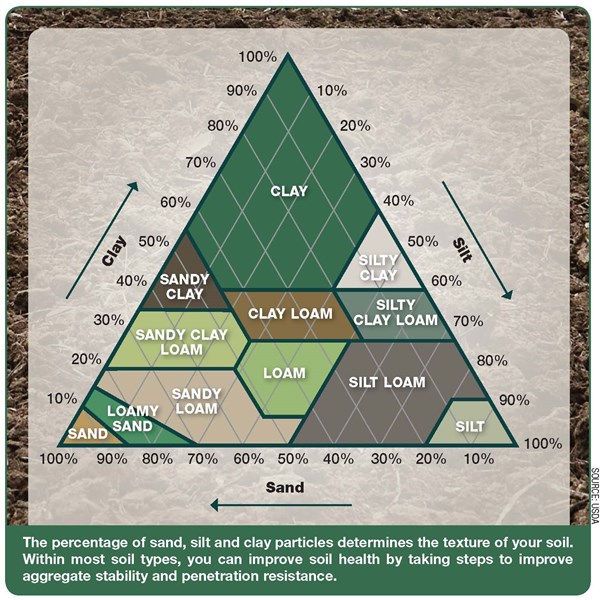 |


